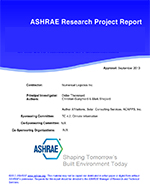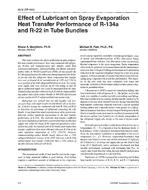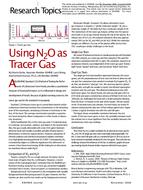Residential distribution systems are inherently inefficient at delivering heated or cooled air to the conditioned space as the result of poor design and installation practices. Examples of some of the more common problems include heat loss/gain in unconditioned spaces and leakage through supply and return ducts. These defects can result in significantly increased energy consumption, poor thermal comfort, and high peak electricity demand. Efforts to improve distribution systems could result in substantial nationwide energy savings since more than fifty percent of existing homes have ducted systems. In an attempt to quantify the potential energy savings resulting from the elimination of duct losses, a field test was conducted to compare the energy consumption of an attic-ducted system to a no-loss duct system for two types of forced-air distribution systems: conventional and high-velocity. The no-loss system was achieved by locating the entire duct system and air handler in the conditioned space. The results were compared to predicted energy savings using ASHRAE Standard 152P as a means of validating the procedures used for determining distribution efficiency. The results from the tests indicate that, for the conventional system, placing the ducts in the conditioned space resulted in a measured energy savings of 31% (heating) and 36% (cooling). The predicted savings using ASHRAE Standard 152P were 33% for heating and 15% for cooling. For the high-velocity system, the measured energy savings were 46% (heating) and 35% (cooling). These compare to predicted savings of 51% for heating and 26% for cooling using the standard. Thus, for both types of distribution systems, the standard is a good predictor of heating energy savings but tends to underestimate the cooling energy savings. Additional tests were performed to determine the effects of locating the air handler in the conditioned space. The results of this series of tests indicate measured energy savings of 10% (conventional) and 9% (high-velocity) for heating, whereas Standard 152P predicts savings of 3% (conventional) and 8% (high-velocity). In this instance, the Standard 152P estimate is reasonable for the high-velocity system and low for the conventional system. For cooling, the measured savings were 11% for the high-velocity system compared to 8% as predicted by Standard 152P. Air handler location tests for the conventional system during the cooling season were inconclusive due to errors in the data.
Units: Dual
Citation: ASHRAE Transactions, vol. 109, pt. 2
Product Details
- Published:
- 2003
- Number of Pages:
- 7
- File Size:
- 1 file , 2.4 MB
- Product Code(s):
- D-20902


